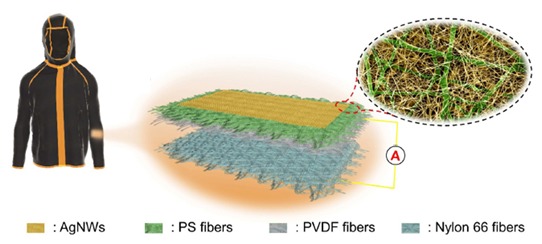Wearable Technology: Researchers Develop Power-Generating Fabric
Scientists have created a new triboelectric fabric that generates electricity from the movement of the body while remaining flexible and breathable

Using the movement of a body to charge electronic devices such as phones may soon become a reality, thanks to the new work done on triboelectric nanogenerators (TENGs).
In a recent study published in Nano Energy, researchers from the University of Fukui, Japan, and Nanjing University, China have developed an all-fibrous composite layer TENG (AF-TENG) that can be integrated with normal fabric.
“With our work, we are aiming to provide a new point of view towards wearable energy harvesters and smart textiles,” says Dr. Hiroaki Sakamoto, the corresponding author for the study.
According to the study, the AF-TENG contains a triboelectric membrane made of two layers of electrospun fibers — one of a material called polyvinylidene fluoride (PVDF) and the other of a type of nylon. Silver nanowires cover these layers. The researchers further added a layer of electrospun polystyrene fibers between the silver nanowires and the triboelectric membrane.

The mechanical motion of the body while walking or running causes the triboelectric layers to gain a charge. This way, the mechanical energy is converted into electrical energy, which can be used to power electronic devices.
According to the researchers on the project, normally, the charge buildup on the triboelectric surface is gradually lost or dissipated, reducing the surface charge density and the output performance of the nanogenerator. However, in this case, the added polystyrene membrane collects and traps the charge, retaining the surface charge density of the AF-TENG. The researchers used the AF-TENG to light up 126 commercial LEDs each rated at 0.06 watts, demonstrating the feasibility of the nanogenerator.
Moreover, according to Dr. Sakamoto, “The power generation device has flexibility and breathability since all components are composed of fiber materials. This device shows great potential in harvesting the static electricity from our clothes.”
While TENGs are currently limited to power low-powered devices such as LEDs and calculators, the researchers say improvements to the wearability and output performance are integral steps towards future wearable technology.



